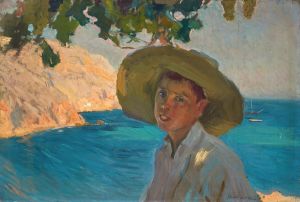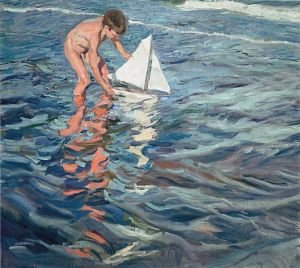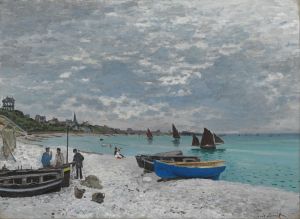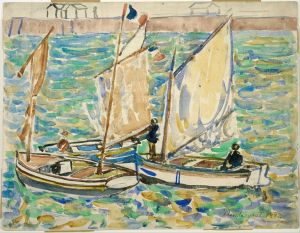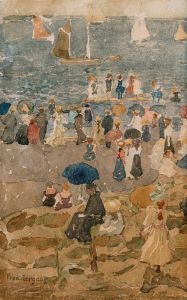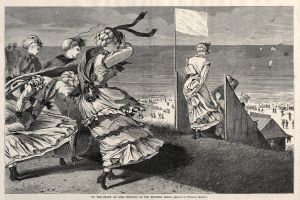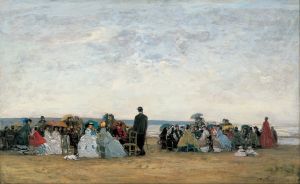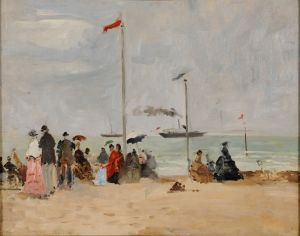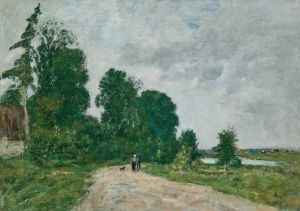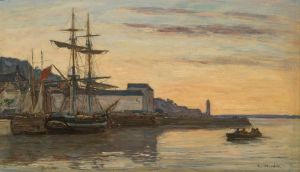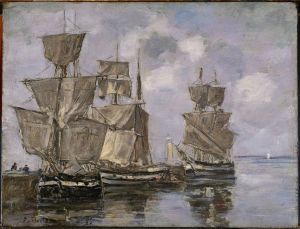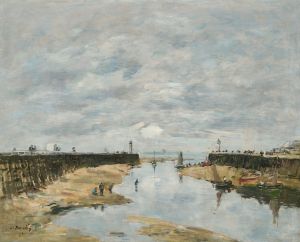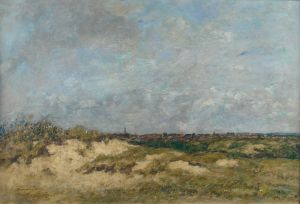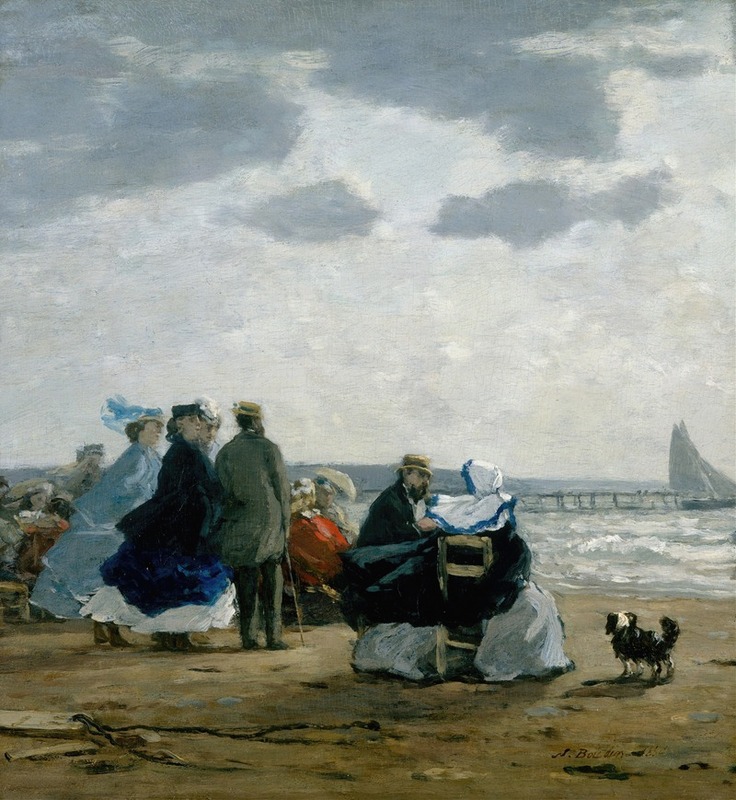
On the Beach, Dieppe
A hand-painted replica of Eugène Boudin’s masterpiece On the Beach, Dieppe, meticulously crafted by professional artists to capture the true essence of the original. Each piece is created with museum-quality canvas and rare mineral pigments, carefully painted by experienced artists with delicate brushstrokes and rich, layered colors to perfectly recreate the texture of the original artwork. Unlike machine-printed reproductions, this hand-painted version brings the painting to life, infused with the artist’s emotions and skill in every stroke. Whether for personal collection or home decoration, it instantly elevates the artistic atmosphere of any space.
Eugène Boudin's "On the Beach, Dieppe" is a notable example of the artist's work, capturing the essence of the French coastline with his characteristic style. Eugène Boudin, born on July 12, 1824, in Honfleur, France, is often regarded as one of the precursors to the Impressionist movement. His dedication to painting en plein air, or outdoors, allowed him to capture the transient effects of light and atmosphere, which became a significant influence on later Impressionist painters.
"On the Beach, Dieppe" exemplifies Boudin's fascination with the seaside and his ability to depict the leisurely activities of the bourgeoisie. Dieppe, a coastal town in Normandy, was a popular destination for vacationers during the 19th century, known for its picturesque beaches and vibrant social scene. Boudin's painting captures this setting with a keen eye for detail and a delicate touch.
The painting typically features a beach scene with elegantly dressed figures, reflecting the fashion and social customs of the time. Boudin's use of light and color is particularly noteworthy; he employs a soft palette to convey the gentle ambiance of the seaside. The sky, often a significant element in Boudin's works, is depicted with a nuanced understanding of cloud formations and the interplay of light, adding depth and dynamism to the composition.
Boudin's technique involves loose brushwork, which allows him to suggest rather than delineate forms. This approach not only captures the immediacy of the scene but also invites viewers to engage with the painting, filling in details with their imagination. His ability to convey the atmosphere of a specific moment in time is a hallmark of his style and a precursor to the Impressionist emphasis on capturing fleeting impressions.
Throughout his career, Boudin remained dedicated to exploring the effects of light and weather on the landscape. His beach scenes, such as "On the Beach, Dieppe," are celebrated for their ability to evoke the leisurely spirit of the era while showcasing his technical skill and innovative approach to painting.
Boudin's influence on the Impressionist movement is well-documented. He was a mentor to Claude Monet, who once referred to Boudin as his "master." Monet's own work was profoundly shaped by Boudin's emphasis on painting outdoors and his focus on natural light. Boudin's legacy is evident in the works of many Impressionists who followed, as they embraced his techniques and expanded upon his vision.
"On the Beach, Dieppe" remains an important piece within Boudin's oeuvre, illustrating his mastery of capturing the essence of coastal life. It serves as a testament to his role in the evolution of modern art and his enduring impact on the artists who succeeded him. Boudin passed away on August 8, 1898, in Deauville, France, but his contributions to the art world continue to be celebrated and studied for their pioneering approach and timeless appeal.





